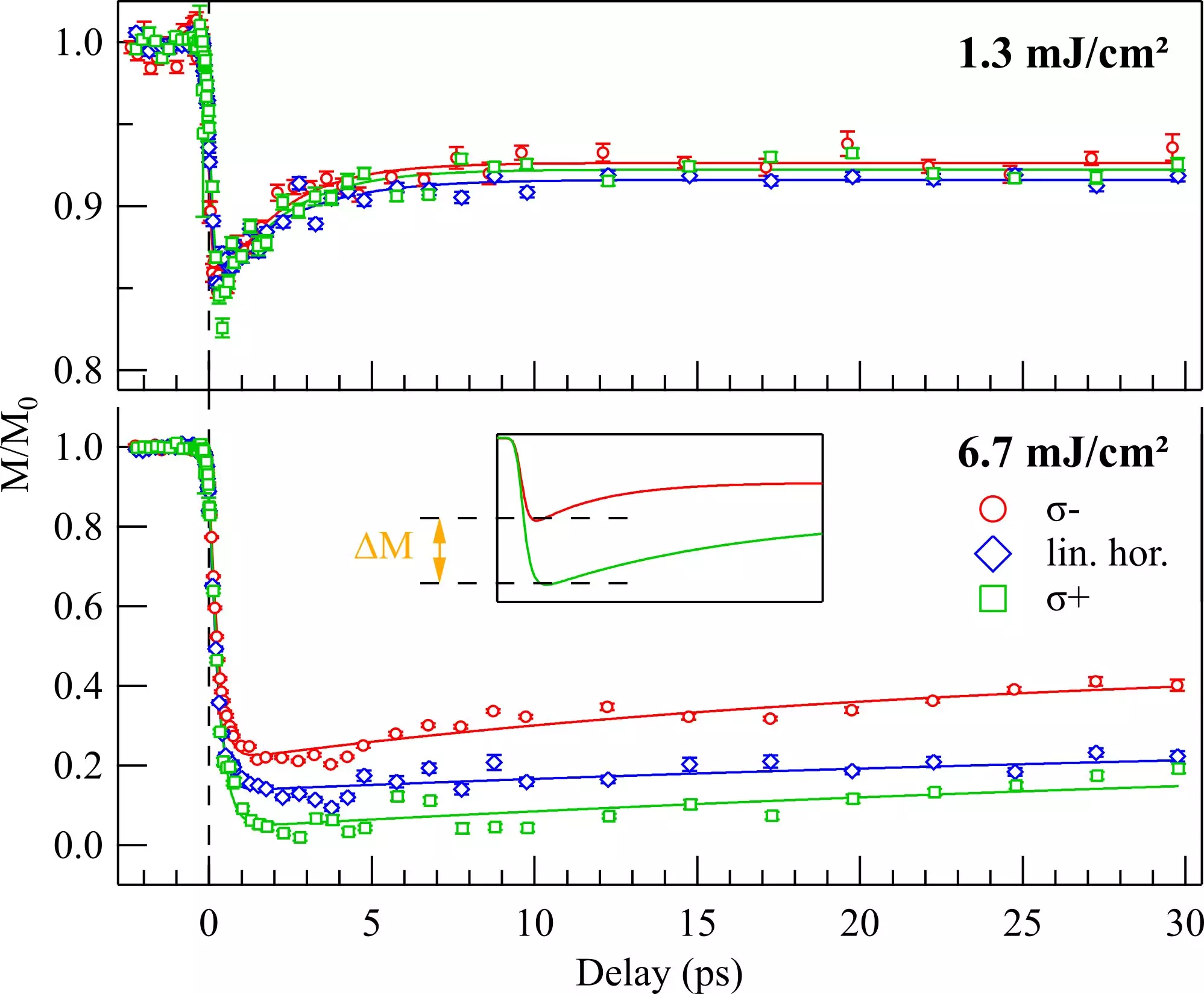The ability to manipulate magnetization orientation on ultrafast time scales is crucial for advancements in various technological fields, such as data storage technologies and spintronics. Traditional methods involve the use of intense laser pulses to induce thermal effects, leading to changes in the magnetic properties of materials. However, these methods suffer from limitations due to the heat load on the material. In a recent study published in Communications Physics, scientists from the Max Born Institute (MBI) and an international team of researchers have introduced a non-thermal approach to generating large magnetization changes using circularly polarized extreme ultraviolet (XUV) radiation.
The traditional approach of using intense laser pulses to manipulate magnetization involves the absorption of energy by the material, leading to rapid heating and subsequent changes in magnetic order. This method, although effective, has limitations in terms of heat load and applicability for fast repetition rates. The new approach introduced by the researchers is based on the inverse Faraday effect (IFE), which relies on a coherent interaction between the polarization of the light and the electronic spins in the material. By exposing a ferrimagnetic iron-gadolinium alloy to circularly polarized XUV radiation, the researchers were able to induce a strong magnetic response depending on the handedness of the light burst.
To overcome the limitations imposed by the absorptive properties of ferro- and antiferromagnetic materials, the researchers used circularly polarized femtosecond pulses of XUV radiation generated at the free-electron laser FERMI. This high-energy XUV radiation allowed for resonant excitation of core-level electrons in the metallic alloy, leading to the generation of large opto-magnetic effects. The results showed that the IFE-induced magnetization could reach up to 20-30% of the ground-state magnetization of the alloy, demonstrating the efficiency of the non-thermal approach.
The experimental results were supported by ab initio theory and spin dynamics simulations, confirming that the observed effects were in line with the expected IFE response. These results debunked the possibility of a purely thermal helicity-dependent mechanism, such as X-ray magnetic circular dichroism (XMCD), explaining the observed magnetization changes. The non-thermal generation of large magnetization on ultrafast time scales holds great promise for the fields of ultrafast magnetism, spintronics, coherent magnetization control, and nonlinear X-ray matter interactions.
The introduction of a non-thermal approach to manipulating magnetization orientation using circularly polarized XUV radiation represents a significant advancement in the field of ultrafast magnetism. By leveraging the inverse Faraday effect, researchers have demonstrated the efficient generation of large magnetization changes without the heat load associated with traditional methods. These findings open up new possibilities for technological applications requiring fast repetition rates and precise control over magnetic properties. The non-thermal manipulation of magnetism has the potential to revolutionize various fields, including data storage technologies, spintronics, and coherent magnetization control.


Leave a Reply